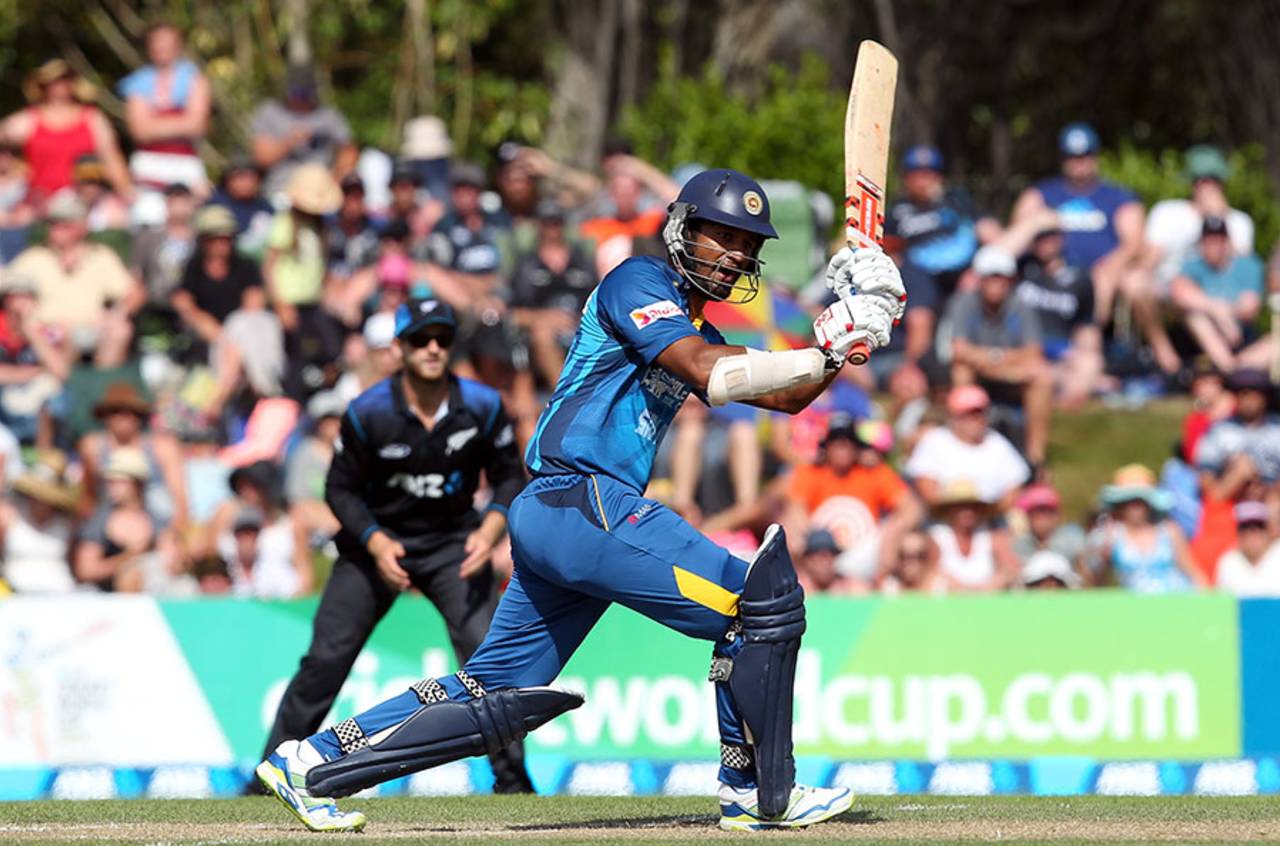In almost every global tournament in the last eight years, Sri Lanka's batting has had the structure of an expensive chocolate. The top is sturdy, even attractive, but the outer shell hides a pliant, squishy centre that opposition bowlers salivate at the thought of sinking their teeth into.
Sri Lanka had appeared to be overcoming this long-standing weakness when Lahiru Thirimanne and Dinesh Chandimal formed productive partnerships with Angelo Mathews towards the end of 2014, but a familiar softness returned in the seven-match ODI series against New Zealand. Between Jeevan Mendis, Thisara Perera, Dinesh Chandimal and Dimuth Karunaratne (who played at No. 5 or lower after losing his opening slot), the lower middle order managed a top score of 26.
Some combination of those players is likely to follow Mathews at No. 5, during the World Cup, with Thirimanne now reinstalled atop the order. But while runs have not flowed late in Sri Lanka's innings, the team can't begin to doubt their personnel now, according to
Kumar Sangakkara, who top-scored in the New Zealand series.
"You have contributions from various parts of your batting line up," he said. "If failures happen consistently you can worry about it, but at the same time, you've got to trust the guys to do their best, because they are the best players. They've been picked for this World Cup because they are the best 15. The worst thing you can really do is start doubting each other and start doubting yourself. We've learned that from our past tournaments."
Sangakkara himself had been part of an inexperienced middle order in the 2003 World Cup, when he had had a worse average and strike rate than Chandimal, at a similar stage of his career. He said the challenge to all Sri Lanka's batsmen was to be both productive and flexible with their approach.
"There are some players who can get a 20-ball 50, and others who will bat 40 overs and get a hundred. You need both. In these conditions we have to understand when to attack and when to be able to batten down the hatches and really concentrate on the long haul. It will be interesting to see how we manage that and how we switch between those two states mentally."
Sri Lanka play their first match against New Zealand on Saturday. While Sangakkara believed no drastic improvements are necessary to defeat the opposition who beat then 4-2 in the recent series, he felt special performances from the more experienced cricketers will be required to progress through the knockouts, should Sri Lanka get there.
"Once you get into that big game, you always look to see if two or three of your players can deliver something a bit more than your normal stock, so you can take a game away from the opposition," he said. "But for us, I don't think there's a huge amount of work to do other than understanding what cost us the games against New Zealand. They're going to be our opening game, but we also have to understand that we have to play different opposition through the tournament. For us it will be about being flexible, being able to do our training and our planning properly, and have the personnel playing in that XI who can execute that out in the middle."
Sri Lanka's spinners have been the best slow bowlers outside Asia since 2013, but Sangakkara also suggested the team would not be shy of playing four frontline seamers, should the conditions suit a pace-heavy attack.
"You've got to be open to your options. You might be able to play your three genuine fast bowlers, and we've got two genuine allrounders in Thisara and Angelo, so they can contribute in a five-fast-bowler combination. If the pitch offers turn, then we have the best current spinner in the world, in Rangana Herath. And then we have Sachithra Senanayake to support him. But then again wickets that turn enable someone like Dilshan, who has been bowling well, to be even more effective. It's interesting the combinations that we will have to play. We can't always stick to tradition and say, 'We've got to play a spinner.'"
Andrew Fidel Fernando is ESPNcricinfo's Sri Lanka correspondent. @andrewffernando
